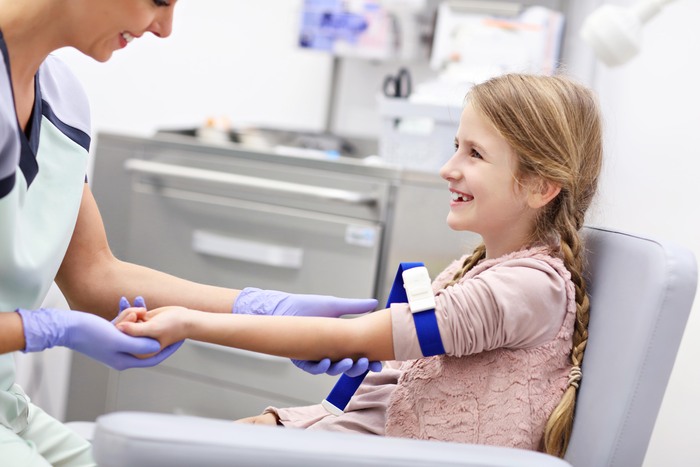Key points
- Lead poisoning is a serious condition caused by the buildup of lead in the body, particularly harmful to young children.
- Lead can enter the body through ingestion, inhalation, or skin contact, and can affect multiple organ systems.
- Lead poisoning is primarily caused by exposure to lead in the environment, including older homes, soil, and certain household items.
- Prevention, early detection, and treatment, such as chelation therapy, are crucial to mitigate the adverse effects of lead exposure. FAQs: Q: What is lead poisoning and who is most at risk? A: Lead poisoning is a potentially life-threatening condition caused by the accumulation of lead in the body. Children under the age of 6 are most at risk due to their developing brains. Q: How does lead enter the body? A: Lead can enter the body through various means such as ingestion, inhalation, or skin contact. It can then spread to various organs including the brain, liver, kidneys, and bones. Q: What are the primary causes of lead poisoning? A: Lead poisoning is primarily caused by exposure to lead in the environment. This can occur through sources like lead-based paints in older homes, contaminated soil, and certain household items. Q: How is lead poisoning diagnosed and treated? A: Lead poisoning is diagnosed through a combination of clinical evaluation, medical history, and blood tests. Treatment involves reducing lead exposure and medical interventions like chelation therapy to remove lead from the body. Q: How can I prevent lead poisoning? A: Prevention measures include regularly washing children's hands and toys, maintaining homes, cleaning dusty surfaces, removing shoes before entering the house, running cold water before use, preventing children from playing on soil, and ensuring a balanced diet.
- Preventive measures include regular cleaning of children's hands and toys, home maintenance, dust cleaning, removing shoes before entering the house, running cold water, preventing soil play, and ensuring a balanced diet.

What Is Lead Poisoning?
Lead poisoning is a medical condition that arises from the accumulation of lead in the body, a heavy metal that is toxic even in small amounts, according to the Environmental Protection Agency (EPA). They note that lead can enter the body through various means, such as ingestion, inhalation, or skin contact, and it can have detrimental effects on multiple organ systems. Understanding what lead is and how it causes poisoning is crucial for recognizing the risks and implementing effective preventive measures, according to the EPA.
Lead is a naturally occurring element found in the Earth's crust. While it has many industrial applications, such as in batteries, paints, and plumbing materials, its toxic properties pose significant health risks, according to the EPA. When lead particles are inhaled or ingested, they can enter the bloodstream and spread to various organs, including the brain, liver, kidneys, and bones. The body stores lead in bones and teeth, where it can remain for decades, slowly releasing into the bloodstream over time and causing chronic exposure.
Lead poisoning also occurs when lead accumulates in the body to toxic levels, disrupting normal physiological functions, according to the CDC. In children, lead poisoning can interfere with brain development, leading to cognitive deficits, behavioral problems, and learning disabilities. In adults, it can cause high blood pressure, kidney damage, and reproductive issues. The symptoms of lead poisoning can be subtle and nonspecific, making early detection challenging but essential for preventing long-term health consequences.
What Causes Lead Poisoning?
Lead poisoning is primarily caused by exposure to lead in the environment, which can occur through various sources, according to the CDC. They note that understanding where lead is commonly found and how it can contaminate everyday objects is crucial for preventing this dangerous condition:
Lead is commonly found in older homes, particularly in lead-based paints used before the 1978 ban in the United States, according to the EPA. They note that when these paints deteriorate, they can produce lead dust and chips that are easily ingested or inhaled, especially by young children who tend to put objects in their mouths. Additionally, lead can be present in soil contaminated by past use of leaded gasoline and industrial emissions, posing a risk when children play outside.
Beyond environmental sources, lead can also contaminate household items and consumer products, according to the EPA. For instance, glazed ceramic ware and stained glass may contain lead, which can leach into food and beverages when used improperly. Imported toys, jewelry, and cosmetics have also been found to contain lead, posing a risk of exposure. Therefore, it is essential to be aware of these potential sources and take preventive measures to reduce the risk of lead poisoning.
Lead Poisoning Symptoms
Lead poisoning can manifest through a variety of symptoms, which may differ between children and adults, according to the AAFP. Recognizing these symptoms early is crucial for prompt diagnosis and treatment, thereby minimizing the long-term health impacts.
The following are key symptoms of lead poisoning, according to the AAFP, which can help you identify potential signs of exposure in both children and adults.
Lead Poisoning Symptoms in Children
Lead Poisoning Symptoms in Adults
-
Headaches
-
Personality changes
-
Anemia
-
Numbness in feet and legs
-
Loss of sex drive
How Is Lead Poisoning Diagnosed?
Diagnosing lead poisoning involves a combination of clinical evaluation, detailed medical history, and specific laboratory tests, according to the AAFP. They note that early detection is essential for effective intervention and minimizing the adverse health effects associated with lead exposure. This section discusses the methods used to diagnose lead poisoning, emphasizing the importance of timely and accurate identification.
The primary method for diagnosing lead poisoning is through a blood test that measures the level of lead in the bloodstream, according to the CDC. This test, known as a blood lead level (BLL) test, is typically recommended for children at risk of exposure, particularly those living in older homes or in areas with known contamination. The AAFP notes that a BLL of 5 micrograms per deciliter (µg/dL) or higher is considered concerning and warrants further investigation and intervention. In addition to the blood test, healthcare providers may also assess symptoms and inquire about potential sources of lead exposure, such as recent renovations, use of certain consumer products, or occupational hazards.
In some cases, additional diagnostic tests may be necessary to evaluate the extent of lead poisoning and its impact on the body, according to the AAFP. They explain that these tests can include X-rays to detect lead particles in bones, kidney function tests to assess potential damage, and neurodevelopmental assessments for children to identify cognitive and behavioral changes. By combining these diagnostic tools, healthcare providers can develop a comprehensive understanding of the patient's condition and formulate an effective treatment plan.
How Is Lead Poisoning Treated?
Treating lead poisoning involves immediate steps to reduce lead exposure and medical interventions to remove lead from the body, according to the AAFP. They note that the first and most crucial step in treatment is identifying and eliminating the source of lead exposure to prevent further poisoning. This may involve measures such as cleaning up lead dust, replacing contaminated water pipes, or removing lead-based paint.
Once the source of exposure is addressed, healthcare providers can focus on medical treatments to reduce the lead levels in the body, especially in cases of higher poisoning levels.
Treatment Options for Higher Levels of Lead Poisoning
-
Chelation Therapy: This treatment involves administering chelating agents, which bind to lead in the bloodstream and help the body excrete it through urine, according to the AAFP. Chelation therapy is typically recommended for individuals with significantly elevated blood lead levels.
-
Ethylenediaminetetraacetic Acid (EDTA) Chelation Therapy: EDTA is a specific type of chelating agent used for severe cases of lead poisoning, according to the AAFP. It is administered intravenously and works by binding to lead, allowing it to be excreted more efficiently. This therapy is often used when other treatments are not sufficient to reduce dangerously high lead levels.
By combining these medical treatments with efforts to eliminate ongoing exposure, healthcare providers can effectively manage and reduce the harmful effects of lead poisoning, according to the CDC.
How Can I Prevent Lead Poisoning?
Preventing lead poisoning is essential to safeguarding the health and well-being of both children and adults. By taking proactive measures to minimize lead exposure in your environment, you can significantly reduce the risk of lead poisoning.
Here are practical tips and strategies to help you create a safer, lead-free living space, according to Nationwide Children’s:
Ways to Prevent Lead Poisoning
-
Wash Hands and Toys: Regularly wash children's hands and their toys to remove any lead dust or particles they may have come into contact with.
-
Keep Your Home Well Maintained: Ensure that any peeling or chipping paint, especially in older homes, is promptly repaired or removed to prevent the spread of lead dust.
-
Clean Dusty Surfaces: Frequently clean floors, windowsills, and other surfaces with a damp cloth or mop to reduce lead dust accumulation.
-
Remove Shoes Before Entering the House: Encourage family members and visitors to take off their shoes before entering the house to avoid bringing in lead-contaminated soil.
-
Run Cold Water: Let cold water run for a few minutes before using it for drinking or cooking, as this can help flush out any lead that may have leached from old pipes.
-
Prevent Children from Playing on Soil: Discourage children from playing in bare soil, which may be contaminated with lead. Instead, provide a sandbox or play area with clean, lead-free materials.
-
Eat a Healthy Diet: Ensure a balanced diet rich in calcium, iron, and vitamin C, as these nutrients can help reduce lead absorption in the body.
By incorporating these preventive measures into your daily routine, you can significantly reduce the risk of lead exposure and protect your family's health.
FAQs
What is lead poisoning and who is most at risk?
Lead poisoning is a serious condition caused by the accumulation of toxic lead in the body. Children under the age of 6 are most at risk.
How does lead enter the body?
Lead can enter the body through ingestion, inhalation, or skin contact.
What are the effects of lead poisoning on children and adults?
In children, lead poisoning can cause cognitive deficits, behavioral problems, and learning disabilities. In adults, it can result in high blood pressure, kidney damage, and reproductive issues.
How is lead poisoning diagnosed and treated?
Diagnosis involves a clinical evaluation, a detailed medical history, and specific laboratory tests. Treatment focuses on reducing lead exposure and using medical interventions to remove lead from the body.
What are some common sources of lead exposure?
Common sources of lead exposure include older homes, soil, and household items.
How can lead poisoning be prevented?
Preventive measures include regularly washing children's hands and toys, maintaining homes, cleaning dusty surfaces, removing shoes before entering the house, running cold water, preventing children from playing on soil, and ensuring a balanced diet.
Do symptoms of lead poisoning differ between children and adults?
Yes, symptoms of lead poisoning can differ between children and adults.
Is lead poisoning a life-threatening condition?
Yes, lead poisoning can be a potentially life-threatening condition if not detected and treated early.

